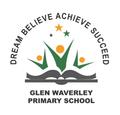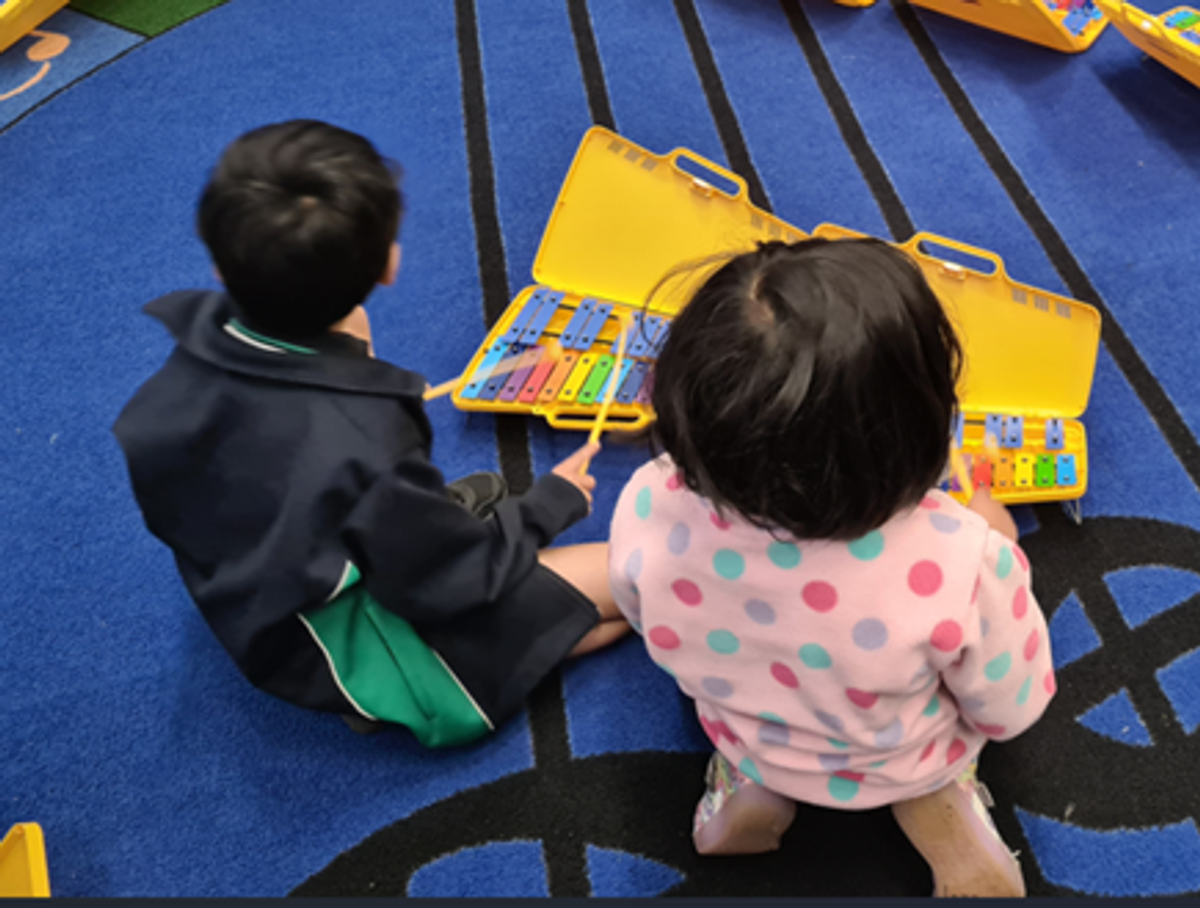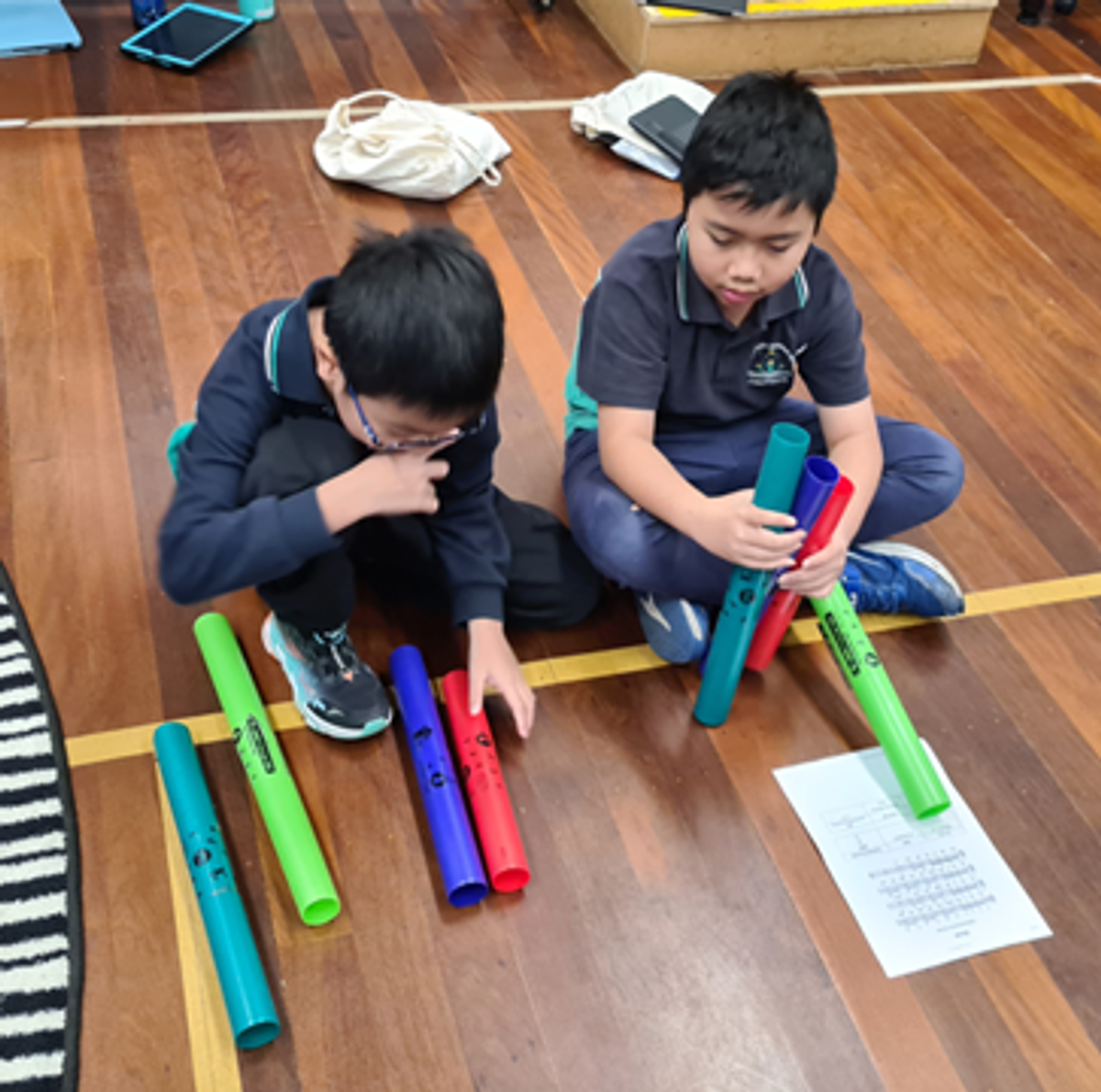Music

Welcome back to Term One! I hope everyone had a lovely Christmas and New Year break. This term we are focusing on developing our understanding and knowledge of Aboriginal and Torres Strait Islander music.
Years Three and Four students auditioned late last year and early this year for Mass Choir in the Victorian State School Spectacular. From these 25 students were selected to represent Glen Waverley Primary School at John Cain Arena in September. Both the students and I are already getting excited to see what songs we will be singing in the Victorian State School Spectacular this year.
Year Five and Six Music Innovation will also take place this term with the students learning and consolidating skills that assist with ensemble playing.
Prep
In Term One, Prep students will commence a unit on why music is important to different people and communities. Prep students will be using their bodies and instruments that can make a range of sounds and pitches to create feeling through music. They will explore how various cultures use music to tell a story and create their own soundscape to tell a story for the class. Prep students will also develop their listening skills through games and be introduced to loud and soft sounds (dynamics) that they will transfer to their soundscape. They will focus on differentiating these various sounds made on instruments through a range of learning tasks designed to build confidence and skill level.
Curriculum Links:
- Explore how and why music is important for people and communities VC2AMUFE01
- Create music that communicates ideas and explores meaning VC2AMUFC01
Key Vocabulary:
Soundscape, listening skills, dynamics.
Year 1
Throughout Term One, Year One students will be beginning a unit on where, when, why and how people in different cultures and communities experience music. They will begin by looking at music they have heard in their own lives before moving on to the local community and then Aboriginal and Torres Strait Islander music. Students will also be introduced to the features and instruments used in Indigenous music whilst learning to sing and play songs from these cultures. They will also explore a variety of actions they can use when performing the songs to assist them in learning and memorising the Indigenous lyrics. Students will analyse these songs and where and why they were created.
Curriculum Links:
- Explore where, when, why and how people across cultures, communities and other contexts experience music, including music composed and performed by Aboriginal and Torres Strait Islander Peoples VC2AMU2E01
- Develop listening skills and skills for singing and playing instruments VC2AMU2D01
Key Vocabulary:
Aboriginal, Torres Strait Islander, features, lyrics.
Year 2
In Term One, Year 2 students will undertake a unit on storytelling through the use of music. Year 2 students will focus on how Aboriginal and Torres Strait Islander do this effectively. They will begin by comparing themes and characters from stories they know well and will learn any songs connected to these stories. Year 2 students will move to exploring how lyrics and dance can support music in telling a story focusing on the representation of animals in Indigenous culture. They will close the unit by planning, creating and performing their own story about their local environment using movement and instruments.
Curriculum Links:
- Explore where, when, why and how people across cultures, communities and other contexts experience music, including music composed and performed by Aboriginal and Torres Strait Islander Peoples VC2AMU2E01
- Sing and play music to communicate to audiences in informal settings VC2AMU2P01
Key Vocabulary:
Aboriginal, Torres Strait Islander, lyrics, dance, storytelling.
Year 3
Throughout Term One, Year 3 students will undertake a unit on how to tell a story about a country and place through the use of music with a focus on Aboriginal and Torres Strait Islander music. They will learn several Indigenous songs and analyse them for meaning and what story they are trying to tell the audience. Students will explore and experiment with instruments that can help tell the story using them in various ways. This will also give students the opportunity to transfer their knowledge of tempo (speed) and dynamics (volume) to instruments. At the conclusion of the term students will create their own story and choose appropriate instruments to assist them in telling this story. Students will transfer their performance skills to play in front of the class.
Curriculum Links:
- Explore how Aboriginal and Torres Strait Islander Peoples use music to communicate their connection to and responsibility for Country and Place VC2AMU4E02
- Sing and play music they have learnt and/or created to audiences in formal and informal settings VC2AMU4P01
Key Vocabulary:
Tempo, dynamics, performance
Year 4
In Term One, Year 4 students will commence a unit on Aboriginal and Torres Strait Islander music specifically on songlines (songs or chants with directions to assist travellers). Students will learn what songlines are, their purpose in Indigenous culture and what role they play in modern times. They will analyse existing songlines created and used by Indigenous people and try to map out and follow the journey of the songline. Students will then transfer their knowledge to begin to create their own songline. Firstly, they will map out the journey they will be taking on a map. Students will then create lyrics for their songline to match their journey keeping to a beat that they have created.
Curriculum Links:
- Explore how Aboriginal and Torres Strait Islander Peoples use music to communicate their connection to and responsibility for Country and Place VC2AMU4E02
- Work with elements of music to communicate ideas, perspectives and/or meaning when composing and practising for performance VC2AMU4C01
Key Vocabulary:
Songline, journey, beat, song, chant
Year 5
Throughout Term One, Year 5 students will undertake a unit about the history and form of songs from the Dreamtime. Students will begin by exploring the history of Dreamtime songs and the purpose of them in Aboriginal culture. They will also analyse these songs to find what instruments if any were used, what the song is about and what its purpose is. When analysing songs students will be transferring their prior knowledge of form (structure). Students will analyse the songs to discover if there is a common form used to tell the story more effectively. They will finish the term by exploring the use of the remaining Elements of Music in Dreamtime songs and how the use of these differs from modern songs.
Curriculum Links:
- Explore ways that the elements of music are combined to communicate meaning in music across cultures, times, places and other contexts including from Aboriginal and Torres Strait Islander Peoples VC2AMU6E01
- Explore ways Aboriginal and Torres Strait Islander Peoples use music to continue and revitalise cultures VC2AMU6E02
Key Vocabulary:
Dreamtime, Elements of Music, Form
Year 6
In Term One, Year 6 students will commence a unit on Aboriginal and Torres Strait Islander musicians and composers. Students will be researching and exploring the features that are present in modern Indigenous music. They will begin by finding and researching artists in the local area before branching out to the national area. Students will also explore how these musicians and composers use their music and performances to share knowledge about their culture with others. They will then transfer this knowledge to learn and perform a song of their choosing from an Indigenous artist or composer. Students will focus on their instrumental technique when performing and also employing the same elements of music used by Indigenous performers to communicate through music.
Curriculum Links:
- Explore ways that the elements of music are combined to communicate meaning in music across cultures, times, places and other contexts including from Aboriginal and Torres Strait Islander Peoples VC2AMU6E01
- Explore ways Aboriginal and Torres Strait Islander Peoples use music to continue and revitalise cultures VC2AMU6E02
Key Vocabulary:
Musician, Composer, elements of music, technique, communicate
How can you support your child’s music learning at home?
- Listen to a wide range of music styles
- Watch a documentary on a composer or artist
- Practise different rhythms by playing a game such as poison rhythm


